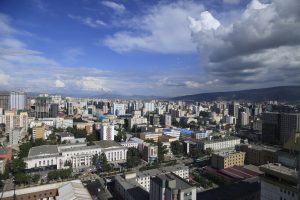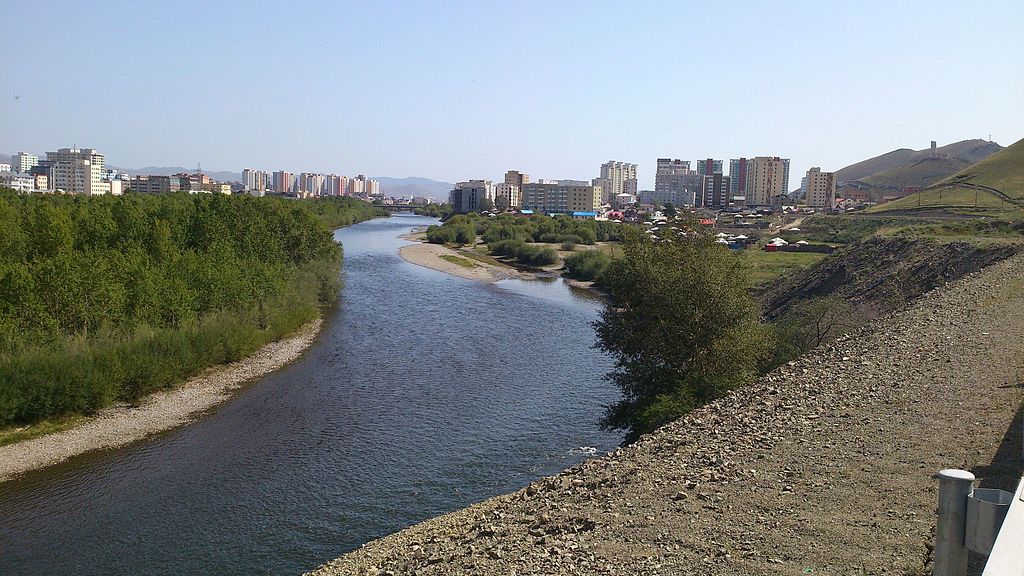What would a world without clean freshwater water look like? In a context of enhanced climate change, rapid urbanization and increased water pollution, concerns around water security have come to the forefront of discussions in academic, political and every-day circles. For landlocked countries with dry climates like Mongolia, this conversation is of paramount importance.
We have been undertaking extensive on-site fieldwork in Ulaanbaatar regarding water security, including conversations with key stakeholders from a variety of institutional and organizational backgrounds about the policy challenges and opportunities around urban water security in the Mongolian capital. We found that institutional fragmentation, lack of data, and inadequate policy implementation are undermining Ulaanbaatar’s water security. In this piece we explain the implications of these challenges and some ways in which they may be addressed in order to improve water security in Ulaanbaatar.
Rapid Urbanization and Water Security in Ulaanbaatar
Ulaanbaatar, located in the north central region of the country, is Mongolia’s capital city. It is also Mongolia’s most populous city, housing around half of the country’s population, an estimated 1.67 million people in 2023. The city’s population has more than tripled since 1990, and it is projected to keep rising over the next decade largely due to the ongoing influx of rural migrants moving to Ulaanbaatar’s outskirts.
The city relies entirely on groundwater supplies that are recharged directly from the Tuul River, which runs through the city. The aquifers of the Tuul River are the lifeline of Ulaanbaatar. For the citizens of Ulaanbaatar, water has always been a valued resource. However, its sustainability is being threatened by continued urbanization, which has drastically increased the demand for freshwater. Mismanagement and climate change together are further jeopardizing Ulaanbaatar’s water supply.
Institutional Fragmentation
A recurring theme across water policy discussions is the complexity of the organizational structure of the institutions that are responsible for water management. Water is an issue that cuts across sectors, institutions, and spatial scales. This is certainly true for Ulaanbaatar and Mongolia in general. This institutional fragmentation leads to a lack of coordination and communication between agencies as well as a poor understanding of shared responsibilities.
In theory, water is the responsibility of the Ministry of Environment and Tourism in Mongolia. However, in practice, up to 10 different ministries may get involved in water related projects. Take the recent project to build a new wastewater treatment plant as an example of this. Although the municipal Water Supply and Sewage Authority is largely responsible for the planning and implementation of the project, numerous other ministries and implementing agencies also participate. This leads to a lengthy and, at times, uncoordinated policy response as the diverse institutions have different interests, priorities, and budgets and work on different timescales.
Aligning different institutional agendas on different timelines is a significant challenge. At the national scale there is a long-term development plan called Vision 2050, which sets a national policy agenda. This document focuses mainly on economic growth, largely through promoting extractive industry. This vision sets different objectives and projections to the sectorial agendas planned for implementation on shorter timescales. For example, the Ministry of Environment and Tourism has recently shifted toward higher environmental regulation and enforcing higher fees for environmental damage, which may be at odds with the longer-term national development project.
Furthermore, implementing agencies such as the Water Authority or River Basin Authorities operate at scales that don’t necessarily match administrative boundaries in the city. This adds another layer of complexity and contributes to institutional fragmentation.
Lack of Data
Consistent and reliable data on water supply in Ulaanbaatar is hard to come by. Groundwater data in Ulaanbaatar is highly classified, for example. This lack of publicly accessible data on groundwater is closely linked to national security concerns, as water is seen to be a valuable strategic resource.
The lack of open information about data availability creates several challenges. First, it restricts the ability of researchers and advocacy groups to raise awareness on water security issues. Second, it creates uncertainty and reduces transparency around water scarcity and future projections of groundwater availability. Third, it creates confusion within agencies as to what can be made publicly accessible or shared with other institutions.
Another challenge relates to the consistency of data collection. Currently there are no water quality monitors in the city. This means that there is no way to accurately monitor where and when waste may have been discharged into the Tuul River. This is a challenge for policymakers as designing effective solutions to improving water quality are complicated by the lack of information on the sources of the issue.
Inadequate Enforcement and implementation
Overall, water policy standards are very high in Ulaanbaatar. They closely follow international best practices and thresholds set by the Organization for Economic Cooperation and Development (OECD), European Union, and World Health Organization. However, implementing agencies are under-financed and under-staffed, making the enforcement of regulations an ongoing challenge. Agencies can’t operate at full capacity and have a limited ability to undertake important projects.
Representatives of the Water Supply and Sewage Authority, a municipal agency responsible for all domestic water provision in Ulaanbaatar, consistently stress that they are operating in a constant state of financial shortfalls. Water provision is very costly, particularly in the periphery of the city where most houses are not connected to the central water supply pipelines. Simultaneously, water is heavily subsidized by the government, which means that the funds collected by the authority for their ongoing activities are severely limited.
Moving Forward
Despite the significant challenges facing water sector stakeholders in Ulaanbaatar, there are opportunities to address these challenges. Here we outline some recommendations that were raised in conversation with stakeholders during our fieldwork.
In order to advance institutional coordination, more attention should be paid to the already existing Multi Stakeholder Platforms (MSPs) to facilitate discussion about ongoing water projects and resolve disagreements between stakeholders. These platforms could also be used to set a clearer separation of responsibilities among the actors involved.
As for data availability, or the lack thereof, more funding for systematic monitoring technologies and open-access portals will be crucial. A useful project, for example, would be to install water quality loggers in key areas such as wastewater discharge locations. Not only would this reduce data collection and processing costs in the long run, but it would also contribute to creating more effective policy as the allocation of fees for pollution could be better enforced.
Even where the data does exist it is still fragmented across different websites, books, and databases, which are often not open access. Therefore, research institutes and government data collection agencies should bring together all existing data into a comprehensive open access dashboard that includes explanations on what the data means in order to make it accessible to the public. If needed, other sources of funding for data gathering institutes should be considered so that they can afford to continue operating while providing open access to their data.
Given that funding is at the core of implementation challenges, water projects should work toward cost-recovery for local water services provision that are currently operating at a cost. A good example of this is the Millennium Challenge Corporation’s “Mongolia Water Compact,” largely funded by the U.S. government, which is working closely with the Water Supply and Sewage Authority to reduce their operating cost and increase their revenue. More projects of this sort that encourage research and collaboration should be welcomed.
While water security concerns are by no means unique to Mongolia, access to clean freshwater has recently emerged as an important national environmental issue. Understanding context-specific challenges regarding water security are imperative to advancing the conversation about how to address these issues and move forward.


































